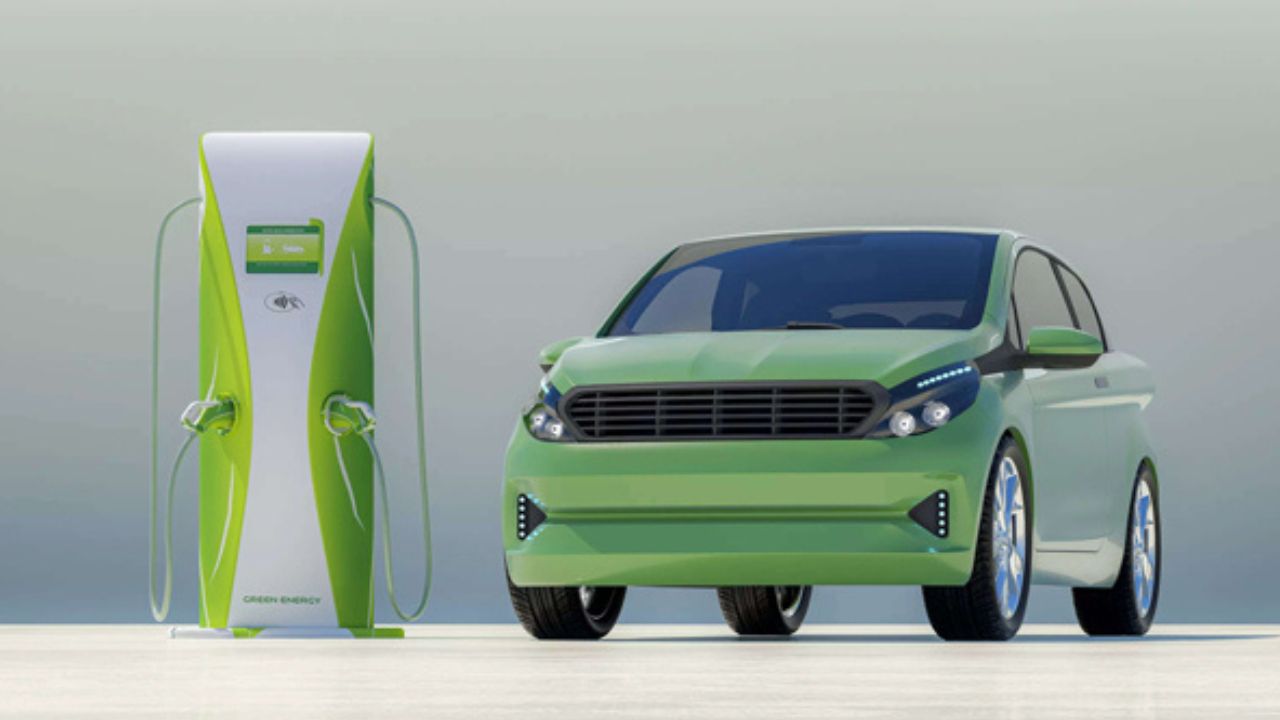India’s rapidly growing cities face two persistent challenges: dangerously high levels of air pollution and a heavy dependence on imported crude oil to fuel the transport sector. A key part of the solution to both these problems lies in shifting from gasoline-powered vehicles to clean, efficient Electric Vehicles (EVs).
To kickstart this transition and build a robust domestic ecosystem for electric mobility, the Government of India launched the FAME India Scheme. It’s the government’s flagship program designed to accelerate the adoption of EVs by making them more affordable for consumers and by supporting the development of essential infrastructure like charging stations.
What is the FAME India Scheme?
- Full Name: Faster Adoption and Manufacturing of (Hybrid &) Electric Vehicles in India (FAME India).
- Launched: Phase I of the scheme was launched in 2015. The much larger, expanded Phase II was launched in April 2019.
- Ministry: Ministry of Heavy Industries.
- The Goal: To promote the switch to electric mobility by providing financial incentives to both consumers and manufacturers. The ultimate aim is to reduce vehicular pollution, cut down the nation’s oil import bill, and establish India as a leader in the EV sector.
How Does FAME Work? The Four Focus Areas
The scheme is designed to build the entire EV ecosystem by focusing on four key areas.
1. Demand Incentives
This is the most visible part of the scheme for the average citizen. The government provides an upfront subsidy or discount to customers who purchase eligible electric vehicles. This subsidy, which is linked to the vehicle’s battery capacity (measured in kWh), significantly reduces the initial purchase price and makes EVs more competitive with their petrol counterparts. The incentives are primarily focused on:
- Electric Two-Wheelers (e-2W)
- Electric Three-Wheelers (e-3W), including e-rickshaws
- Electric Four-Wheeler Passenger Cars (e-4W)
- Electric Buses (e-Buses)
2. Charging Infrastructure
A major concern for potential EV buyers is “range anxiety”—the fear of running out of charge with no charging station nearby. To address this, a significant part of the FAME-II budget is dedicated to supporting the rollout of a nationwide network of public EV charging stations, especially along major highways and in big cities.
3. Pilot Projects and New Technologies
The scheme also supports pilot projects for innovative applications of electric mobility, such as in public transportation systems and for last-mile connectivity.
4. Domestic Manufacturing
By providing incentives for vehicles that meet certain localization criteria, FAME encourages the domestic manufacturing of EVs and their key components, especially advanced batteries. This aligns with the broader “Make in India” initiative.
FAME-I vs. FAME-II: The Evolution
- FAME-I (2015-2019): This was a pilot phase that provided a wide range of subsidies and helped create initial awareness about electric vehicles.
- FAME-II (2019 onwards): This is a much larger and more focused phase with an outlay of ₹10,000 crore. A key shift in FAME-II was the focus on providing subsidies mainly for public and shared transport (like electric buses, taxis, and three-wheelers) and high-performance electric two-wheelers. The idea was to support the segments that would deliver the maximum environmental benefit and usage.
The Human Touch: A Cleaner, Cheaper Commute
Kiran works as a food delivery executive in Bengaluru, covering over 100 kilometers a day on his petrol motorcycle. The ever-rising petrol prices were eating up a huge portion of his daily earnings, and the frequent maintenance was an added expense.
He learned about the FAME-II subsidy available on electric two-wheelers. The upfront discount of several thousand rupees made a high-quality electric scooter with a good range suddenly affordable for him. He took a small loan and made the switch.
The change in his life was immediate. His daily “fuel” cost dropped by nearly 80%, as charging the scooter at home overnight was far cheaper than buying petrol. The silent, smooth ride was a bonus, and with fewer moving parts, the maintenance costs were almost zero. Kiran now saves a significant amount of money every month, which has improved his family’s financial stability. At the same time, he’s contributing to reducing the noise and air pollution on his city’s crowded streets.
Impact and Challenges
Impact
- EV Sales Boom: The FAME scheme has been a major catalyst for the explosive growth in EV sales in India, particularly in the electric two-wheeler and three-wheeler segments. The scheme has supported the sale of over a million EVs.
- Electrifying Public Transport: FAME-II has been instrumental in the sanctioning and deployment of thousands of electric buses across various cities, which is a crucial step in cleaning up urban air.
- Ecosystem Development: The scheme has spurred significant investment from both startups and established players in EV manufacturing and the charging infrastructure business.
Challenges
- High Upfront Cost: Even with subsidies, the initial purchase price of some EVs, especially electric cars, remains a barrier for many consumers.
- Charging Infrastructure Gaps: While the charging network is growing, it needs to become much denser and more reliable to completely eliminate range anxiety, particularly for inter-city travel.
- Dependence on Imports: India is still heavily dependent on imports for the most critical component of an EV: the advanced battery cells.
Conclusion
The FAME India Scheme is a critical and successful policy intervention that is steering India’s massive automotive sector towards a clean, green, and electric future. It effectively addresses the key barriers to EV adoption—high cost and lack of charging infrastructure—through a well-designed incentive structure. By promoting electric mobility, the FAME scheme is not just helping to build a new industry; it’s a vital part of India’s strategy to create cleaner cities, enhance its energy security, and meet its international climate commitments.
